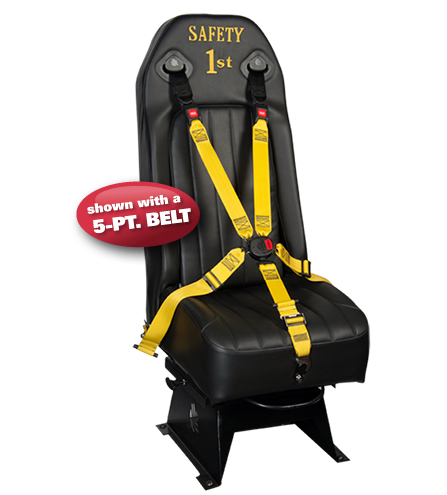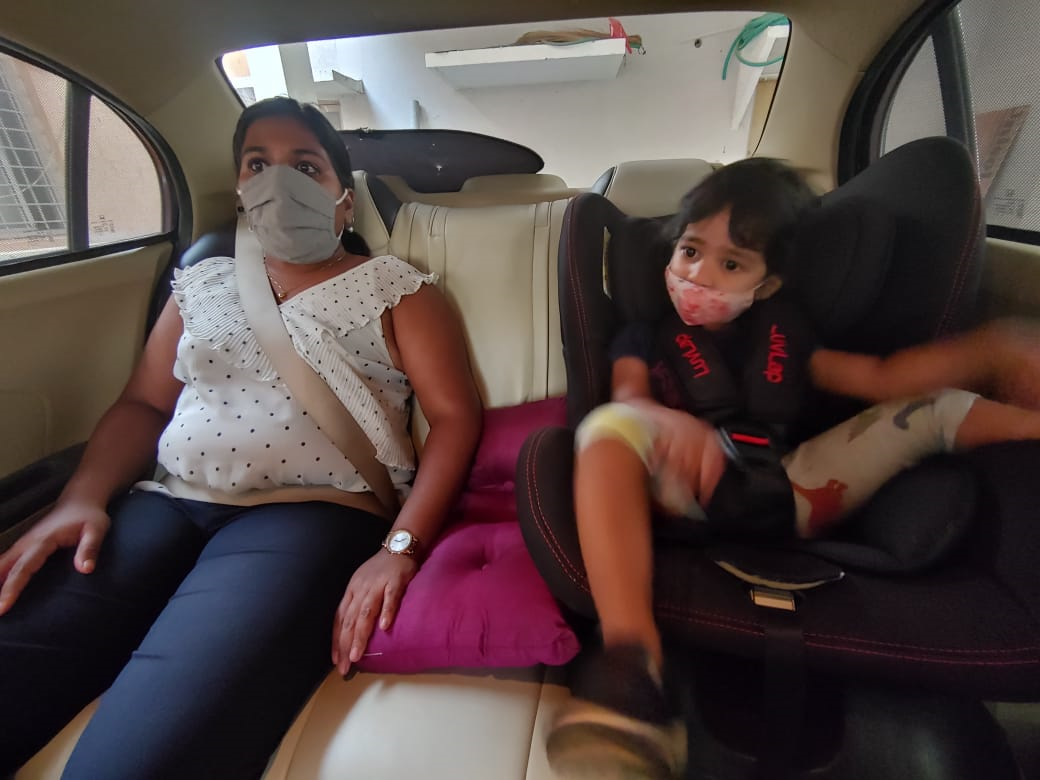


although it is recommended to keep them rear-facing until at least 2 years old or until they outgrow the rear-facing car seat height and weight, whichever is longer. Rear-facing seats are deemed the safest, and in the US children must remain in this position until they are at least 1 year of age and at least 20 pounds (9.1 kg). Infant carriers are mounted rear-facing and are designed to "cocoon" against the back of the vehicle seat in the event of a collision, with the impact being absorbed in the outer shell of the restraint. Some (but not all) seats can be used with the base secured, or with the carrier strapped in alone. Infant carriers are often also called "Bucket Seats" as they resemble a bucket with a handle. In the past, most infant seats in the US went to 20 pounds (9.1 kg) and 26 inches (66 cm). Most infant seats made in the US can now be used up to at least 22 pounds (10.0 kg) and 29 inches (74 cm), with some going up to 35 pounds (16 kg). This design distributes the restraining forces over the child's head and body, excluding its limbs, in the event of the frontal collision.įor young infants, the seat used is an infant carrier with typical weight recommendations of 5-20 lb. Infant carrier means a restraint system intended to accommodate the child in a rearward-facing semi- recumbent position. Seat belts for adults were not standard equipment in automobiles until the 1960s.Ĭhild safety seats first became available in the late 1960s, but few parents used them. American Leonard Rivkin, of Denver Colorado, designed a forward-facing seat with a metal frame to protect the child. British inventor Jean Ames created a rear-facing child seat with a Y-shaped strap similar to today's models. It was not until 1962 that two designs with the purpose of protecting a child were developed independently. The purpose was to act as booster seats to bring the child to a height easier for the driving parent to see them. Though child seats were beginning to be manufactured in the early 1930s, their purpose was not the safety of children. Most restraints were put into place to protect adults without regard for young children. Since the first car was manufactured and put on the market in the early 1900s, many modifications and adjustments have been implemented to protect those that drive and ride in motorized vehicles.

It came into effect in July 2013 and provides extra protection in several ways, most notably by providing rearward facing travel for children up to 15 months instead of 9 to 12 months, which the previous EU regulation advised. In 2013, a new car seat regulation was introduced: " i-Size" is the name of a new European safety regulation that affects car seats for children under 15 months of age. Generally, the ISOFIX system can be used with Groups 0, 0+ and 1. The standard now includes a top tether the U.S.
#CHILD RESTRAINT SYSTEMS ISO#
In 1990, the ISO standard ISOFIX was launched in an attempt to provide a standard for fixing car seats into different makes of car. To tackle this negative trend, health officials and child safety experts produce child safety videos to teach proper car seat installation to parents and caregivers. However, research indicates that many child safety restraints are often not installed or used properly.

Child safety seats provide passive restraints and must be properly used to be effective. Many jurisdictions require children defined by age, weight, and/or height to use a government-approved child safety seat when riding in a vehicle. Most commonly these seats are purchased and installed by car owners, but car manufacturers may integrate them directly into their vehicle's design and generally are required to provide anchors and ensure seat belt compatibility. A child safety seat, sometimes called a infant safety seat, child restraint system, child seat, baby seat, car seat, or a booster seat, is a seat designed specifically to protect children from injury or death during vehicle collisions.


 0 kommentar(er)
0 kommentar(er)
